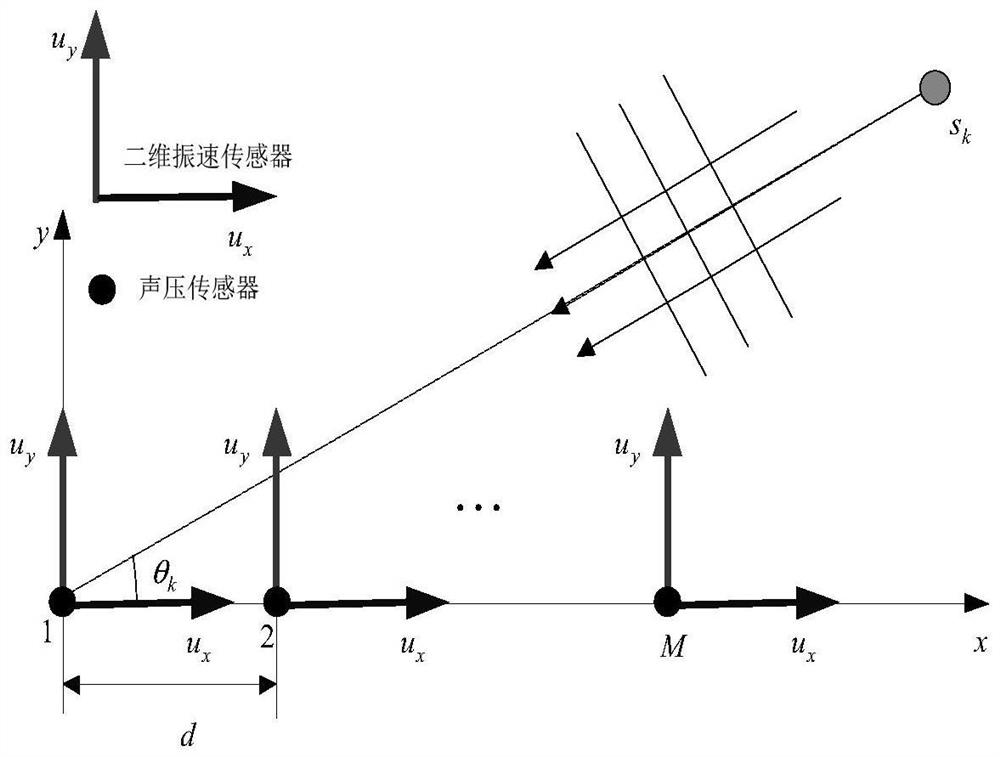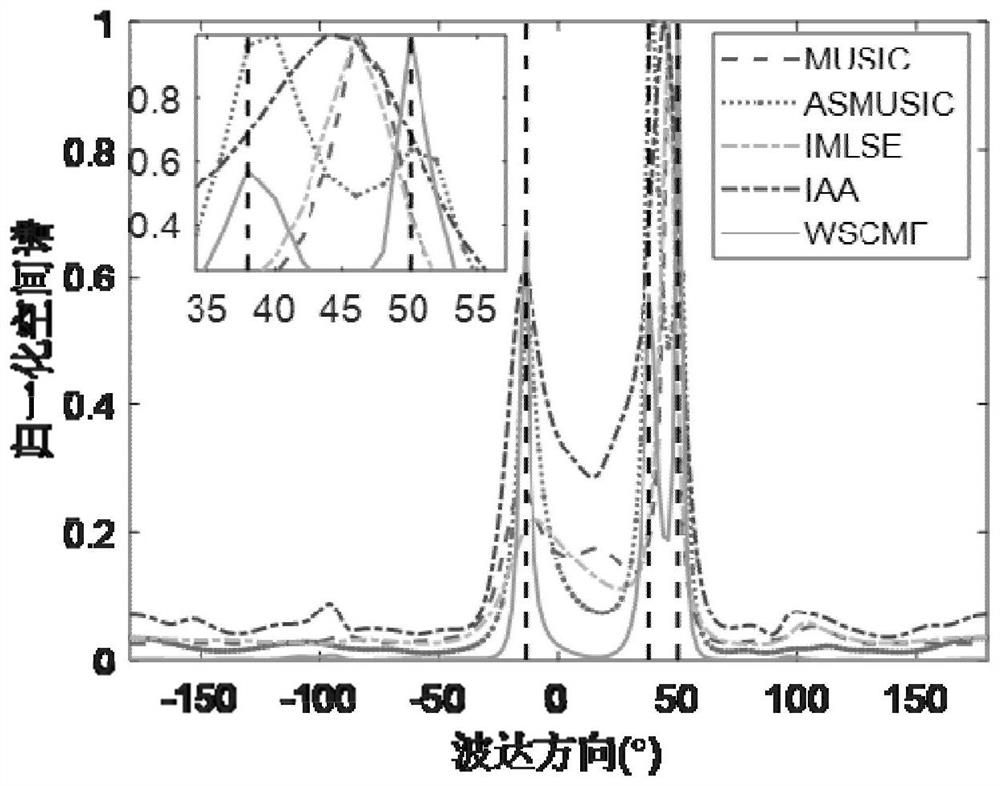Acoustic vector sensor array direction of arrival estimation method under non-uniform noise
An acoustic vector sensor and direction-of-arrival estimation technology, which is applied to direction finders using ultrasonic/sonic/infrasonic waves, complex mathematical operations, etc., can solve problems such as deterioration of azimuth estimation performance, achieve less calculation, accurate signal power, The effect of precise bearing estimation
- Summary
- Abstract
- Description
- Claims
- Application Information
AI Technical Summary
Problems solved by technology
Method used
Image
Examples
Embodiment
[0121] like Figure 1-6 As shown in the figure, a method for estimating the direction of arrival of an acoustic vector sensor array under non-uniform noise, the method includes the following steps:
[0122] Step 1, receive the output vector X output by the acoustic vector sensor array;
[0123] Step 2, based on the sparse signal model, calculate the signal covariance matrix P and the noise covariance matrix Q according to the output vector X, and use the obtained signal covariance matrix P and noise covariance matrix Q to construct a sparse covariance matrix R;
[0124] Specifically, step 2 includes the following sub-steps:
[0125] Step 21, build a sparse signal model of the acoustic vector sensor array in the case of non-uniform noise:
[0126] Assume that K far-field equal-power narrow-band signals with wavelength λ are incident on a uniform linear array composed of M acoustic vector sensors. The configuration of the acoustic vector sensor array is as follows figure 2 w...
PUM
 Login to View More
Login to View More Abstract
Description
Claims
Application Information
 Login to View More
Login to View More - R&D
- Intellectual Property
- Life Sciences
- Materials
- Tech Scout
- Unparalleled Data Quality
- Higher Quality Content
- 60% Fewer Hallucinations
Browse by: Latest US Patents, China's latest patents, Technical Efficacy Thesaurus, Application Domain, Technology Topic, Popular Technical Reports.
© 2025 PatSnap. All rights reserved.Legal|Privacy policy|Modern Slavery Act Transparency Statement|Sitemap|About US| Contact US: help@patsnap.com



